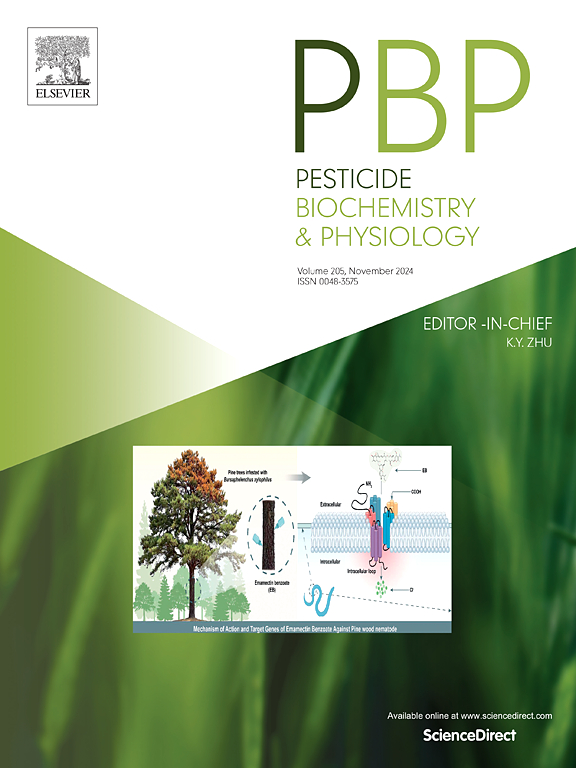转运体介导的拟除虫菊酯在Caco-2细胞间的上皮转运及机制
IF 4.2
1区 农林科学
Q2 BIOCHEMISTRY & MOLECULAR BIOLOGY
引用次数: 0
摘要
口服摄入是人体接触农产品中农药残留的主要途径,肠道吸收在决定其生物利用度方面起着关键作用。本研究利用Caco-2细胞模型研究拟除虫菊酯的上皮转运机制。表观渗透系数(Papp)表明拟除虫菊酯极易被吸收,外排比(ER)在1.27 × 10−3 ~ 5.52 × 10−2之间,表明被动扩散是主要的转运方式。拟除虫菊酯类杀虫剂的转运涉及外排转运体和内流转运体。分子对接表明,疏水相互作用有助于高效氯氰氰酯与p -糖蛋白(P-gp)、多药耐药相关蛋白(MRP)和乳腺癌耐药蛋白(BCRP)的高结合亲和力。代谢组学进一步发现,P-gp、MRP和BCRP是atp结合盒转运蛋白介导蓝氯氰菊酯转运的关键载体,次黄嘌呤和泛酸是重要的差异代谢物。这些发现强调了转运蛋白在农药残留吸收中的作用,为人类暴露评估提供了有价值的见解。本文章由计算机程序翻译,如有差异,请以英文原文为准。
Transepithelial transport and mechanism of pyrethroids across Caco-2 cells mediated by transporters
Oral ingestion is the primary route of human exposure to pesticide residues in agricultural products, with intestinal absorption playing a pivotal role in determining their bioavailability. This study investigated the transepithelial transport mechanisms of pyrethroids using a Caco-2 cell model. Apparent permeability coefficients (Papp) indicated that pyrethroids are readily absorbed, with efflux ratios (ER) ranging from 1.27 × 10−3 to 5.52 × 10−2, suggesting passive diffusion as the primary transport mode. Both efflux and influx transporters were involved in pyrethroids transport. Molecular docking showed that hydrophobic interactions contribute to the high binding affinity of lambda-cyhalothrin toward P-glycoprotein (P-gp), multidrug resistance-associated protein (MRP), and breast cancer resistance protein (BCRP). Metabolomics further identified P-gp, MRP, and BCRP as key ATP-binding cassette transporters mediating lambda-cyhalothrin transport, with hypoxanthine and pantothenic acid as significant differential metabolites. These findings underscore the role of transporters in pesticide residue absorption, providing valuable insights into human exposure assessment.
求助全文
通过发布文献求助,成功后即可免费获取论文全文。
去求助
来源期刊
CiteScore
7.00
自引率
8.50%
发文量
238
审稿时长
4.2 months
期刊介绍:
Pesticide Biochemistry and Physiology publishes original scientific articles pertaining to the mode of action of plant protection agents such as insecticides, fungicides, herbicides, and similar compounds, including nonlethal pest control agents, biosynthesis of pheromones, hormones, and plant resistance agents. Manuscripts may include a biochemical, physiological, or molecular study for an understanding of comparative toxicology or selective toxicity of both target and nontarget organisms. Particular interest will be given to studies on the molecular biology of pest control, toxicology, and pesticide resistance.
Research Areas Emphasized Include the Biochemistry and Physiology of:
• Comparative toxicity
• Mode of action
• Pathophysiology
• Plant growth regulators
• Resistance
• Other effects of pesticides on both parasites and hosts.

 求助内容:
求助内容: 应助结果提醒方式:
应助结果提醒方式:


